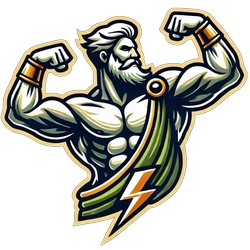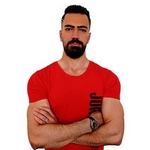Choosing the right whey protein can make or break your fitness progress.
With endless options on the market, it’s easy to waste money on the wrong supplement.
As a professional fitness trainer with years of experience, I’ve tested countless whey proteins and guided clients to results they never thought possible.
Here’s exactly how to pick the best whey protein supplement for your goals—without confusion or gimmicks.
Table of contents
How to Pick the Right Whey Protein
If you’re overwhelmed by all the whey protein options, here’s the simple truth:
Choose a trusted brand that fits your goal, offers at least 20–25g of protein per scoop, and is third-party tested for purity.
Start with whey concentrate if you’re on a budget. Switch to isolate if you want fewer carbs and lactose. Pick hydrolyzed whey only if you need ultra-fast digestion or have lactose sensitivity.
I’ve personally tried all three. After years of training and coaching, isolates have been the most consistent and gut-friendly choice for me and most of my clients.
Understand Different Types of Whey Protein

- Whey Concentrate: Affordable, slightly higher in carbs and fats, good for beginners on a budget.
- Whey Isolate: More filtered, higher protein percentage, minimal lactose—ideal for cutting or sensitive stomachs.
- Hydrolyzed Whey: Pre-digested for faster absorption, great for lactose-intolerant athletes or pre-competition prep.
During a lean-cutting phase, I switched to Dymatize ISO100 Hydrolyzed Whey. It digested quickly, didn’t cause bloating, and kept my protein intake clean without adding unnecessary calories.
If you’re confused about using whey versus other supplements, read my guide on whey protein vs mass gainer.
Check Protein Content and Purity
Always read the label. A good whey protein should provide 20–25g of protein per serving with minimal fillers.
Avoid powders that list added sugars, creamers, or proprietary blends as main ingredients.
I once bought a cheap whey protein from a local store that promised high protein content but left me bloated and underperforming in workouts.
Later, independent lab tests revealed it contained less protein than claimed—a mistake I won’t repeat.
For specific dosage advice, see my guide on how much whey protein a 70kg person needs.
Look for Quality Certifications and Testing

Reliable whey proteins often have NSF Certified, Informed-Sport, or similar third-party testing logos.
These certifications mean the supplement is free of banned substances and contains exactly what the label claims.
I recommend sticking to well-known brands like Optimum Nutrition Gold Standard Whey, which has consistently passed third-party tests and delivers what athletes expect.
If you’re curious about how quickly whey delivers results, check my article on whey protein results after 1 month.
Consider Your Fitness Goal
- Muscle Gain: Concentrate or isolate with higher calorie content works fine.
- Fat Loss or Cutting: Isolate or hydrolyzed whey helps keep calories and carbs lower.
- Digestive Sensitivity: Hydrolyzed whey or lactose-free isolates are best.
One of my clients, Marta, struggled with digestion issues.
Regular concentrates upset her stomach. Switching to hydrolyzed whey solved the problem and helped her lose 5 kg of fat while maintaining muscle over 12 weeks.
For teens wondering if whey is safe, here’s a detailed guide: Is whey protein safe for teenagers?
Avoid Common Mistakes When Choosing Whey

- Don’t fall for flashy labels or exotic blends—focus on purity.
- Don’t assume the most expensive whey is the best.
- Avoid products without transparent ingredient lists or lab testing.
Client Daniel used a sugar-heavy whey supplement and wasn’t gaining lean muscle.
I guided him to a cleaner isolate with 25g protein per scoop.
In just 10 weeks, he gained 3 kg of lean muscle and reported faster recovery.
If taste is important for you, I’ve also reviewed the best whey protein mixes for taste.
Trainer’s Real-World Recommendation
For most beginners, start with a reputable whey concentrate or isolate.
Once you understand your body’s response, adjust accordingly.
I’ve personally seen great results with Optimum Nutrition Gold Standard Whey for everyday use and Dymatize ISO100 during cutting phases.
Remember, whey protein is just a tool—it complements a solid diet and training plan.
Don’t stress over the perfect powder; instead, focus on consistency and overall nutrition.
Also, don’t forget to check the shelf life of whey protein after opening to ensure safety and freshness.
Picking the Best Whey Protein for You
Choosing the right whey protein doesn’t have to be confusing.
Stick to trusted brands, check labels for purity, match the type to your fitness goal, and listen to your body.
After a decade of bodybuilding and coaching, I can confidently say:
When you choose a high-quality whey protein tailored to your needs, you’ll recover faster, build muscle efficiently, and hit your fitness goals without digestive struggles.



Leave a Reply